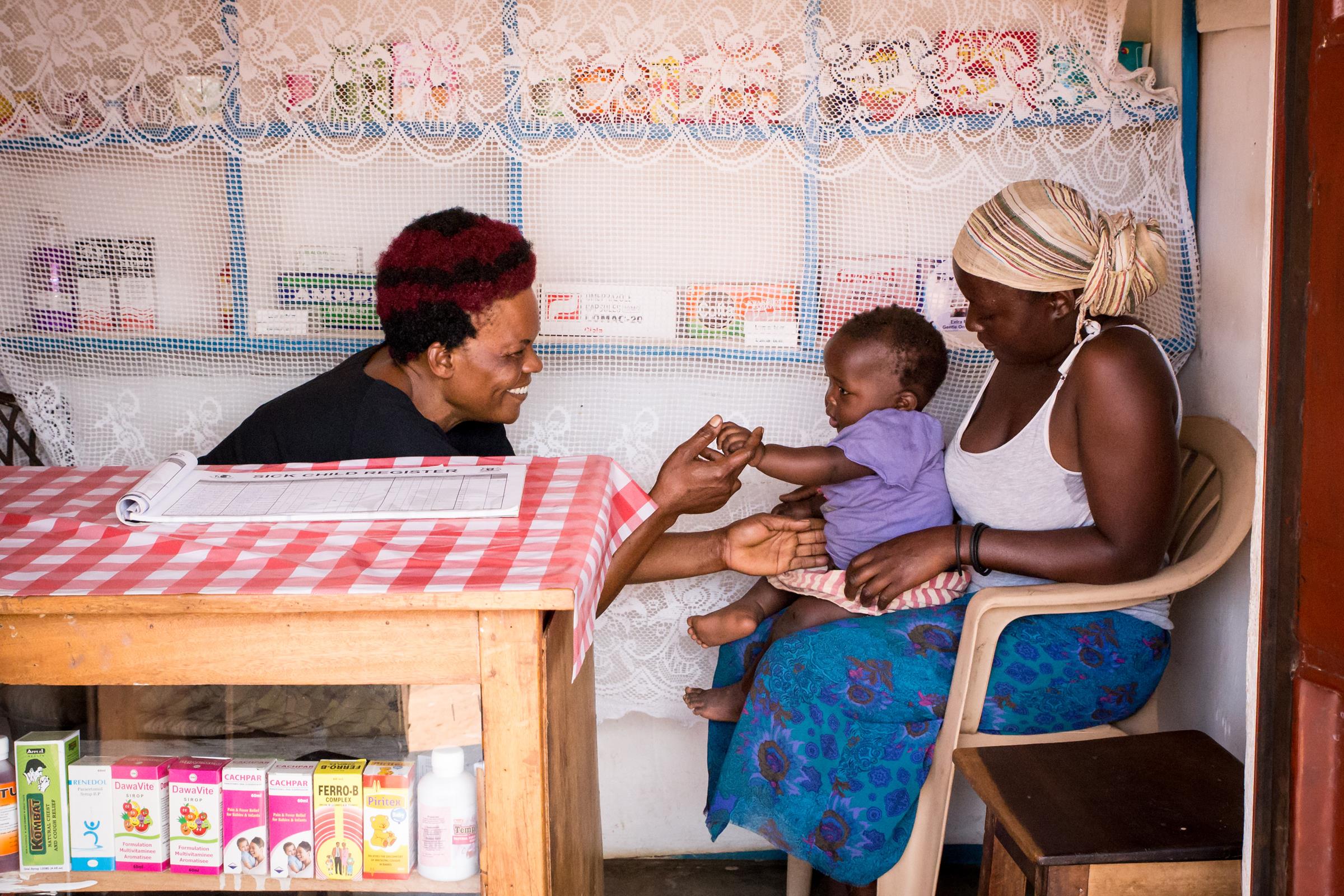In a small village in rural east-central Uganda, baby Josephin is happily babbling to her mother Kevina and crawling around the yard. She has recovered from a bout of bad diarrhea that she was suffering from just one day ago. Josephin is one of the lucky ones. She was able to access oral rehydration salts (ORS) and zinc – the most effective treatments for diarrhea in children – that allowed her to make a quick recovery. However, this had not always been the case in Uganda and many other countries.
For decades, diarrhea has been one of the top causes of death in children. Over 9 million children died between 2000 and 2010, and more than 500,000 continue to die every year. Even when children survive, repeated episodes can have serious long-term impacts on their health. While vaccinations can reduce deaths from diarrhea by up to half, the simple combination of ORS and zinc has the potential to prevent 93 percent of all child deaths from diarrhea. Even so, use of ORS and zinc has been unacceptably low. In 2011, less than a third of children were receiving ORS and less than 5 percent receiving zinc globally.
We knew that something had to change. In 2012, CHAI began working with governments, donors, and other partners to rapidly increase ORS and zinc use in India, Kenya, Nigeria, and Uganda. After only four years, ORS and zinc use increased rapidly from less than 1 percent receiving both ORS and zinc to 24 percent, reaching more than 55 million children and averting up to 76,000 deaths.
Collaborating with governments, the program addressed four key bottlenecks:
– Improving healthcare provider’s confidence in ORS and zinc: CHAI worked with professional associations and governments to reach public and private providers with education and mentorship to ensure that they were prescribing the right treatments at the right dosages for children. In Nigeria, training and mentorship of healthcare providers led to an increase of children with diarrhea seen by government health workers to receive both ORS and zinc – from 7 percent to 51 percent – and for diarrhea seen by private health workers – from 1 percent to 29 percent.
– Generating caregiver demand for ORS and zinc: In each focal country, consumer demand generation efforts were based on in-depth research on the most effective messages and channels to reach the mothers with children under-five, especially those living in rural areas. The program leveraged platforms with the greatest reach, such as mass media, religious schools, health talks at primary health centers, and community health workers, to drive preference and care-seeking for ORS and zinc. In India, mass media supported one-on-one educational visits to healthcare providers to further increase the use of ORS and zinc by up to 1.5 times.
– Increasing local supply and reduce prices for ORS and zinc: Before the program, nearly all focal countries were producing low-quality ORS and importing expensive zinc. CHAI engaged local manufacturers to invest in ORS and zinc production, promotion, and sales by assisting them with product registration, cost reduction, marketing, and product packaging. In Kenya, the program worked with the government and local manufacturers to introduce co-packaged ORS and zinc so that the two treatments would always be given together and at 43 percent the cost of buying the two treatments separately.
– Fostering collaboration and develop a supportive policy environment: Child health programs often operated in silos and with little coordination. With minimal resources, especially compared to HIV, malaria, and other disease areas, diarrhea control programs required strong coordination and efficiency. The program worked with governments and partners to form a collaborative network to reduce redundancies and drive integration across stakeholders. Additionally, the program worked with the government to allow zinc to be dispensed over-the-counter along with ORS. In Uganda, the government formed a Diarrhea and Pneumonia Coordinating Committee that included participation from more than 10 organizations that closely collaborated on healthcare provider mentoring sessions and demand generation campaigns.
This comprehensive approach means that the number of diarrhea episodes that have been treated with ORS and zinc has risen from around 1.2 million to more than 35 million across target areas. Baby Josephin in Uganda is one of those that has been successfully treated.
Josephin received ORS and zinc from her local health worker when she had diarrhea. Her local health worker, a private drug shop owner named Florence, had attended one of the trainings conducted by the program and had also received several one-on-one mentorship visits. Florence credits the training and mentorship visits for improving her knowledge on how to correctly administer ORS and zinc. Josephin’s mother, Kevina, was very happy, as baby Josephin was back to playing and breastfeeding happily within a day.
Despite the significant progress, there is still much more work to do — over two thirds of children are still not receiving the optimal treatment. We now know how to significantly scale up access to treatment, and Kenya, India, Nigeria, and Uganda have led the way in showing that it is not only possible, but achievable. These best practices can pave the way for future work, and should encourage others to take up these efforts.






